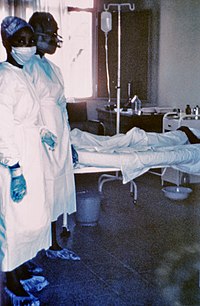
Photo from wikipedia
Pathogenic RNA viruses continue to emerge owing to their rapid evolutionary rates. The family of the Flaviviridae contains enveloped, single-stranded, positive-sense RNA viruses that include mosquito borne viruses such as… Click to show full abstract
Pathogenic RNA viruses continue to emerge owing to their rapid evolutionary rates. The family of the Flaviviridae contains enveloped, single-stranded, positive-sense RNA viruses that include mosquito borne viruses such as dengue virus and the blood-borne hepatitis C virus. Upon infection, the genomic viral RNA needs to first compete with a sea of host mRNAs for host ribosomes that synthesize the viral proteins. Then, the positive-sense template needs to be amplified and packaged into newly assembled virions. To accomplish these tasks, the virus subverts several biochemical machineries from the host. The participation of specific structures in the viral RNA mediates specific RNA-RNA and RNA-protein interactions that dictate many viral subversion strategies. In this review, we shall focus on the various mechanisms by which RNA elements in the dengue virus and hepatitis C virus untranslated regions aid the viral infectious cycle and contribute to viral fitness.
Journal Title: Current opinion in microbiology
Year Published: 2020
Link to full text (if available)
Share on Social Media: Sign Up to like & get
recommendations!